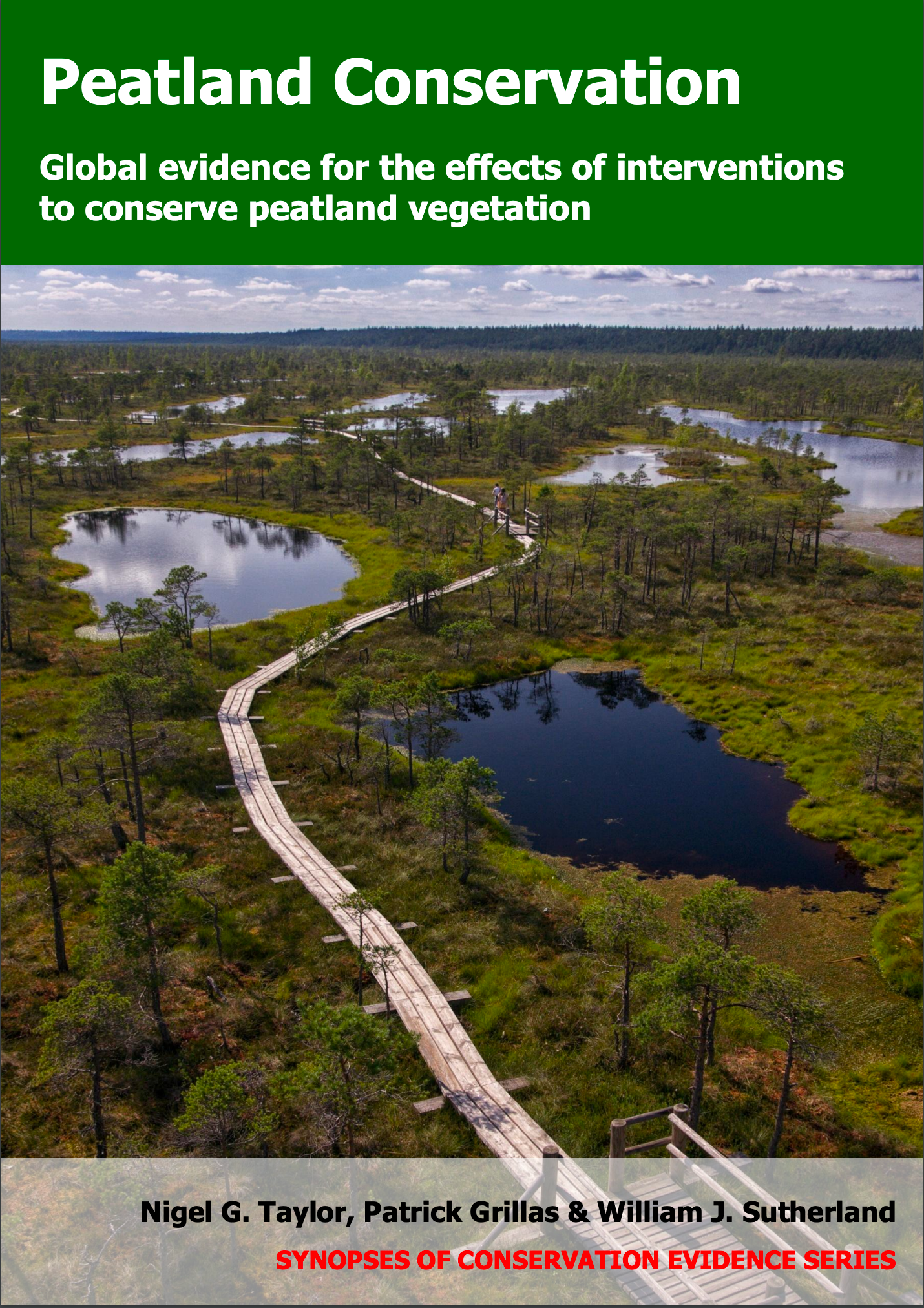Drain/replace acidic water
-
Overall effectiveness category Unknown effectiveness (limited evidence)
-
Number of studies: 2
View assessment score
Hide assessment score
How is the evidence assessed?
-
Effectiveness
40% -
Certainty
35% -
Harms
10%
Study locations
Supporting evidence from individual studies
A controlled study in 1989–1993 in a degraded floating fen in the Netherlands (Beltman et al. 1996) reported that draining acidic surface water increased herb cover, but only when moss was also removed. These results were not tested for statistical significance. Drainage alone had no effect on vegetation cover. After four years, a drained and undrained plot had similar vegetation cover (total moss: 93%; Sphagnum: 62%; herbs: 3%). However, drainage in combination with moss removal favoured herbs. A plot drained and cleared of moss developed 76% herb cover with 0% moss cover. In contrast, a plot cleared of moss but not drained regained high moss cover (total moss: 96%; Sphagnum: 53%; herbs: <1%). In 1989, a ditch was built to drain surface water from two 16 m2 plots in an acidified, nutrient-enriched fen. Two other plots were not drained. In 1991, the moss carpet was also cleared from one drained and one undrained plot. In 1995, vegetation cover was recorded in six 1 m2 quadrats/plot.
Study and other actions testedA controlled, before-and-after study in 1991–1996 in a degraded floating fen in the Netherlands (Bootsma et al. 2002) reported that draining acidic surface water (and replacing it with less acidic water) increased plant species richness and Sphagnum moss cover, but had no effect on sedge or common reed abundance. These results were not tested for statistical significance. Before intervention, plots contained approximately 16 species. After five years, drained plots contained 22–43 plant species, compared to 14–16 species in undrained plots. Drained plots had 41–100% Sphagnum cover, compared to 21–40% in undrained plots. Drain and undrained plots had similar cover of sedge Carex nigra (0–20%) and abundance of common reed Phragmites australis (in 81–100% of quadrats). Effects of drainage on cottongrass Eriophorum angustifolium abundance were more complicated and depended on whether moss was also removed (see original paper). In January 1992, ditches were built to drain surface water from one plot in an acidified, nutrient-enriched fen. An inflow of less acidic water was also created. Water was not manipulated in a neighbouring plot. Within each plot, surface moss was cleared from three subplots but not three others. Between 1991 and 1996, vegetation was estimated in quadrats covering 6–8 m2 of each subplot.
Study and other actions tested
Where has this evidence come from?
List of journals searched by synopsis
All the journals searched for all synopses
This Action forms part of the Action Synopsis:
Peatland Conservation
Peatland Conservation - Published 2018
Peatland Conservation





)_2023.JPG)














